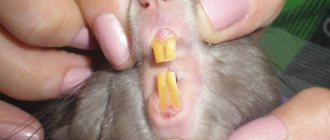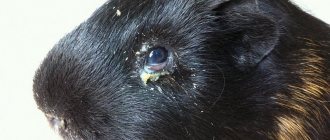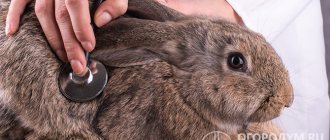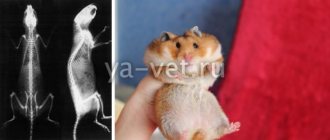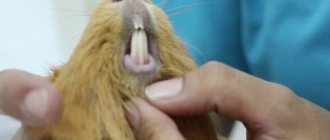What foods are needed in a hamster's diet?
The health of a pet directly depends on nutrition. It is necessary to feed your hamster only high-quality and fresh foods. You cannot give food from your table, as it will not suit the animal. The diet of the dzhungarik should consist of the following products:
- Specialized feed. They can be purchased at a pet store or made yourself. Typically mixtures consist of wheat, oats, buckwheat and legumes.
- Sunflower, pumpkin, and melon seeds.
- Various nuts, hazelnuts and peanuts.
- Fresh herbs, lettuce, nettles, plantain, parsley and dill sprigs.
- Vegetables and fruits.
A rodent, receiving vitamins from these products, becomes healthy, vigorous and active.
What does a domestic rat look like?
The appearance of the domestic rat has not undergone major changes compared to its wild relatives. Most animals have an elongated, stocky body and a long hairless tail covered with sparse bristles. The size of the animal can be from 8 to 30 cm, and its weight can be up to 400-500 g. The elongated head is crowned with round ears, the eyes are small and bulging. The jaw of rats consists of 4 front incisors and molars. Different breeds of decorative rats differ in the structure of their fur:
There are animals without hair, for example, sphinxes and rodents with mixed coats. Colors can be plain or mixed. From gray and brown to orange and blue.
In Dumbo rats, the ears “sit” not on the top of the head, but lower, like those of elephants. As a result of the mutation, rats were born with no tail at all.
Diarrhea in hamsters is manifested by the following “signals”:
Grumbling in the stomach.
When you get close to your animal, you will hear a rather unusual sound coming from the animal’s tummy - grumbling.
Smell.
Even at the very beginning of the process - diarrhea, a very unusual and pungent odor appears. Feces.
The animal will defecate more often than usual, so “traces” will be present throughout the cage and the most unpleasant thing is that the feces have an unusual consistency and an unpleasant odor. In case of prolonged diarrhea, the animal’s excrement may contain droplets of blood.
Hunger strike.
The rodent may not eat well or even refuse to eat at all.
Read also: Causes of pain in the lower abdomen
Behavior.
The animal most often behaves unusually: it lies in one place and does nothing. An attempt to pick up a rodent will end in failure: the animal will moan and squeak, because any movement will cause it pain.
Is it possible to place a baby rat with an adult rat?
Baby rats up to 2 months old can be placed with both males and females, but there are some nuances. Males will most likely accept the baby well, but problems will begin upon reaching adulthood. Adult males must build a hierarchy of relationships among themselves, and young rats are no exception. In the case of ladies, difficulties will arise when placing a baby rat with an adult rat. “Girls” don’t like strangers, even if they are kids. We'll have to wait until the children are saturated with the smell of the old-timers. When the adopted children “receive official registration” from mature ladies, then everything will be calm.
If you need to place a baby with a lonely rat, then it is better to have two
When the old rat passes into another world, the owner will not be left with a lonely animal. And if the old man does not accept the young ones, then the two will have more fun in the next cage.
The procedure for introducing rats is as follows: if the baby needs to be placed with the elders, then you should first wash the cage so that there is no smell of adults left there, and vice versa, a mature rat, when entering the territory of the kids, will behave more modestly in the presence of other people's scents. It is best to breed rats on neutral territory.
Signs of the disorder
Some may argue that when an animal has loose stools, the child will notice it, but you should be able to distinguish between a normal stomach upset and a serious illness. In the event of accidental indigestion due to the incompatibility of some products, the rodent may pass liquefied feces once, and then everything will be restored. In this case, you should pay attention to the previous menu of the hamster to prevent a recurrence of such a surprise.
In case of a serious illness, the animal leaves its liquid heaps all over the cage and its backside does not have time to dry out and looks unkempt, despite how diligently the hamster monitors its hygiene.
Other signs of diarrhea:
Is it possible to wean it off?
Poop appearing in a hamster’s house is a signal that you should take care of your pet’s personal hygiene. It is not worth preventing a hamster from eating its own poop often because it is a natural instinct. However, it is extremely necessary to wean your baby from emptying his stomach in the house. There are certain reasons for this, including:
- the stench that begins to emanate from the pet after a while;
- storing feces where the animal stores food.
In order to wean an animal from defecating in the house, after a while it is enough to move it to the opposite corner of the cage. The baby will definitely not leave feces in a new place, since he orients himself mainly by smells.
Signs of diarrhea in hamsters
Some may argue that when an animal has loose stools, the child will notice it, but you should be able to distinguish between a normal stomach upset and a serious illness. In the event of accidental indigestion due to the incompatibility of some products, the rodent may pass liquefied feces once, and then everything will be restored. In this case, you should pay attention to the previous menu of the hamster to prevent a recurrence of such a surprise.
In case of a serious illness, the animal leaves its liquid heaps all over the cage and its backside does not have time to dry out and looks unkempt, despite how diligently the hamster monitors its hygiene.
Other signs of diarrhea:
- Loss of appetite
- Immobility
- Lack of response to the outside world
- Weakness
- Irritability
Signs of diseases that can result in death:
- E. coli: diarrhea, bleeding
- Colibacillosis: pungent stool odor, exhaustion
- Paralysis, pestilence: convulsions, festering eyes, runny nose, matted fur, vomiting, cough
- Salmonella: yellow-green stool, bloating, temperature rise and fall to critical levels
- Enteritis: high fever, loose stools
- Wet tail: wet rear end, diarrhea
- Poisoning: loss of coordination, lack of appetite, lethargy
If you experience any of the symptoms, contact the clinic immediately. Delay can lead to death due to diarrhea or dehydration. Do not allow anyone near the hamster - it is possible that everyone who comes into contact with it will become infected.
At home, treating diarrhea in a hamster can lead to its death and infection of other animals or members of your family, so at the first symptoms the animal needs hospitalization. While the animal is being treated, the cage and everything it comes into contact with should be disinfected. After handling it, wash them with soap.
Why do hamsters eat their babies?
Age
According to statistics, females under 2 months of age most often devour cubs. Although a hamster can become pregnant at 1 month, her hormonal background is not yet formed. By the time of birth, the female does not feel the need to care for the offspring, and destroys the offspring. To prevent cannibalism, animals should be bred from 4 months and older.
Especially often, trouble happens if the female was purchased at a pet store while she was already pregnant. A change of environment is very stressful for a hamster, and it affects behavior.
Unhealthy offspring
If babies are born with some kind of genetic deformities or defects, the mother will instinctively get rid of them. Sick or weak babies will be eaten. Inferior offspring are often born as a result of inbreeding - inbreeding, when animals from the same litter mate. Sometimes the female does not kill herself, but eats the cubs that have died for some reason.
Numerous offspring
The female has 8 nipples, she can feed 8-12 cubs, but if 16-18 of them are born, there is a high probability that the mother will gnaw on the “extra” ones. In this case, “partial cannibalism” is observed - from time to time the female eats one or several babies, and continues to feed the remaining ones, and they survive.
This situation is typical for Syrians with multiple births. The destruction of hamsters begins in the first days after birth, and ends as soon as the cubs learn to eat adult food.
Female health status
Childbirth and lactation are a serious test for the rodent’s body. Babies grow incredibly quickly both in the womb and after birth. If the mother's nutrition was insufficient, her body after childbirth is on the verge of exhaustion. Such a female will not be able to feed her babies, and in order to survive, she can eat her children.
Any health problems or poor living conditions provoke such a development of events. If the female does not have enough water, food or space in the cage, she will not raise offspring.
Human intervention
If there is a foreign odor on the cubs, the female will kill them. Related to this is the ban on holding babies in the first week after birth. Given the nervousness of these rodents, you should stop putting your hands in the cage a few days before the babies are born. Hamsters eat their offspring when they sense the presence of strangers, that is, danger.
During the breeding season, even a familiar and beloved owner is regarded as a stranger.
Presence of relatives
Both Djungarian and Syrian hamsters are loners by nature. The presence of a male in the cage makes both animals nervous. The female becomes nervous and aggressive. She can first kill the male, then the cubs, ready to do anything just to remain the sole owner of the territory.
Sometimes the father hamster eats his children. The female, exhausted by childbirth, cannot stop him, and often does not even try.
Stress, fear
Any emotional shock to a pregnant or lactating female poses a threat to the offspring. The renovation has begun with the sounds of a hammer drill, moving. It is enough to simply pull the hamster out of the house or let the cat near the cage.
How to treat the disorder
What to do if your hamster has diarrhea? A specialist can best answer this question. The veterinarian will not only determine the cause of diarrhea, but also prescribe treatment. However, it is not always possible to consult a specialist for advice. At home, it is necessary to take a set of measures aimed at eliminating the cause of the disease and its consequences.
If the hamster is not alone in the cage, move it away from its neighbors. A sick animal needs peace and quiet. The dzhungarika's cage needs to be disinfected, the bedding replaced, the leftover food thrown away, and the water in the drinking bowl replaced with clean water. You need to give the rodent water with a 0.3% tetracycline solution or chamomile decoction.
If diarrhea is caused by poisoning, you need to cleanse your pet's stomach using emetics. It is better to feed your hamster oatmeal, boiled rice or. During diarrhea, fresh greens and succulent food should not be given.
Before and after contact with a sick animal, you must wash your hands with laundry soap.
How to walk a rat
It is better to refuse to walk a rat on the street: it is too dangerous: the animal can “pick up” an infection on the ground or in the grass. Any noise can cause panic, and the animal will run away. There is a category of pets that feel comfortable in their bosom. You can go out with such rodents in warm weather without putting them on the ground. However, it is better to carry your pets in a carrier.
A rat can only walk on your shoulder
For home leisure, you need to fence off the walk in a room where there are no wires or dangerous objects. You can release the animals on the sofa or table, but make sure that they do not fall.
Respiratory infections in hamsters
Hamsters can get respiratory infections that can lead to pneumonia. Signs of a respiratory infection include sneezing, discharge from the eyes or nose, wheezing, and difficulty breathing.
Occasional sneezing is not too concerning, but if there is loss of appetite, decreased activity, wheezing or difficulty breathing, contact your veterinarian immediately.
Warning
Drafts and sudden changes in temperature can put your hamster at risk of developing a respiratory infection, and some types of bedding (such as cedar and pine) can irritate the respiratory tract, which can also lead to infection.
Why does a rat pee on your hands?
The pet doesn’t pee so much as mark its owner, and that’s normal. Like dogs, rodents must “stake out” their territory, including their owner and his belongings. Marking differs from peeing by the volume of urine produced: a drop is enough to indicate ownership.
Rats often mark their hands
The rat “pees” on people if they are saturated with strong odors: perfume or detergents. It is almost impossible to stop a rat from marking. A young male can be castrated, but this will not be a 100% guarantee either.
Source
Skin diseases in hamsters
Hamsters can be infested with a variety of skin and fur mites, which can be diagnosed by a skin scraping performed by a veterinarian. Ringworm, fungal infection, allergic dermatitis and skin infections can also occur on the skin and require treatment by a veterinarian.
Hair loss is not unusual and may be seasonal or occur in older hamsters. But if the skin develops flaking, redness or any lesions, or if your hamster itches more than usual, you should contact your veterinarian.
Hamsters do have scent glands on their sides, which can be dark and sometimes alarming to owners. They occur on both sides of the body and should not cause irritation or bother the hamster. Cedar bedding can also cause skin irritation and should be avoided.
Do rats like to be petted?
Tame animals gladly accept affection from their owners, especially if they do not try to lift them by the tail. You should pick up the rat with both hands: it often climbs onto your outstretched palm. In order for a rat to like it, you need to stroke its head, scratch it behind its ears and on its cheeks. The animal enjoys a gentle touch on the withers and stroking the back in the direction “from the head”. Some animals trust their owner to scratch their belly, but not all. You can observe the social interactions of rodents to understand what they like.
Basic rules for keeping a rodent
In addition to the diet, the well-being of the jungar is influenced by the conditions of detention. The animal's cage must correspond to its size; in a cramped and small house the animal will be uncomfortable. The hamster must lead an active lifestyle, so it is necessary to provide it with special toys.
We begin the process of accustoming to the toilet
Only after we have chosen a toilet (or made it ourselves) and filled it with bedding can we begin training. How to toilet train a hamster? Everything is very simple here. He chooses the place himself. He knows better; we must completely trust the rodent in this matter. No matter how hard we try to make a choice ourselves, the hamster may not agree with us. Therefore, we simply look at what place he chose to satisfy the need. When you notice that a rodent goes “on business” to one place and the same place, that’s where we should put our prepared toilet.
What should I do to prevent bloating from appearing?
Simple rules to reduce the risk of flatulence:
- Eating should be slow, with thorough chewing of food, without distraction by extraneous actions.
- Avoid quick snacks on the go, smoking, and drinking alcohol.
- Limit the consumption of foods that increase gas formation.
- Avoid sugary carbonated drinks (there is nothing healthy in them).
- Drink enough clean water per day.
- Follow a proper diet (fried, fatty foods should not predominate)3.
Before a big feast or when overeating, it is better to take care of preventing bloating* in advance. To do this, you can take Creon® 10000 capsule with food or immediately after it. The active substances contained in the drug help natural digestion, reducing the risk of discomfort and heaviness after eating.
Is it possible to transport rats on an airplane?
Theoretically it is possible, but it is a troublesome task:
- Find out whether you can carry a rat according to the rules of this airport.
- Find out if your carrier transports rats.
- Get a veterinary certificate for the rodent 3 days in advance.
- Before checking in, go through vet control at the airport.
Do not forget about the laws of another country, whether the animal will be allowed there. It can only be carried in the cabin; it will not hold up in the luggage compartment. Don't put your rat through the scanner, it will hurt it. Don't open your rat's carrier on an airplane. It can only be fed through the grate.
Hair loss and other diseases of hamsters
Dandruff, scratching and baldness in hamsters can be caused by ectoparasites, pathogenic dermatophyte fungi, endocrine system disease, and sometimes tumors. The severity and duration of skin diseases in hamsters depends on the cause.
Many of these diseases, such as dermatophytosis or lichen in hamsters , are contagious and can be transmitted to humans. Therefore, if you notice suspicious symptoms, immediately take your hamster to a veterinarian.
Hamsters are often troubled by Demodex , which can be transmitted from one hamster to another. Only a veterinarian can identify the cause and prescribe the correct treatment.
Abscesses are an accumulation of pus in a limited cavity. Pus accumulates under the skin, sometimes forming large, painful swellings on the surface of the hamster's body. Abscesses can form due to cuts and scrapes in the skin. If sharp food particles injure the wall of the cheek pouch, a cheek pouch abscess may develop, and the cheek will appear full all the time. Abscesses require treatment by a veterinarian.
Lymphocytic choriomeningitis is a disease of viral etiology; it can be asymptomatic in hamsters, but there is a danger of infection in humans. When buying a hamster for a child, remember the possible risks; conduct a preventive examination of the animal by a veterinarian.
How to catch a pet rat
Sometimes smart rodents get out of the cage and disappear. If this happens, you shouldn't panic. The suspected location of the animal should be isolated and secured and the search should begin. The rat, getting out of the cage, does not try to go far, and hides in its usual place. If she is a steeplejack, it is worth starting the search from the upper shelves, and vice versa, the “earthly” rat is looking for a gap in the lower tier. Will a decorative rat come back if it runs away? Sometimes a tame animal comes out when its owner calls, but you shouldn’t count on it too much.
A rat can hide in any crevice
Important! You need to move things carefully so as not to harm the hidden animal.
Pets may be used, but under strict supervision. The cat will find the fugitive faster or indicate his place. As a last resort, use a live trap. You can leave the cage doors open and place liquid bait, such as yogurt, in the cage. A hungry animal will follow the smell, but will not be able to steal the treat. To prevent the rat from running away, make the locks more complex. The animals are able to lift the door, and sometimes cope with a carbine.
How to toilet train a hamster
A change of environment is a big stress for a rodent. From the very first days of his stay in the house, you should not try to teach him to go to the toilet. You need to give him time to get used to the new place and watch him.
First, the hamster must become familiar with its home and get used to it. Usually, after a week, pets independently choose the corner in which they will relieve themselves in the future. This is where the toilet should be placed.
In order for the animal to understand what the container is for, it is necessary to pour filler from the cage into it, which smells like its urine. Over time, the rodent should begin to go to the designated place. Some animals learn to litter box faster, others slower.
Selection and purchase of filler
Not every litter is suitable for a hamster's litter box. The main requirements for it are safety and environmental friendliness. It should also absorb moisture well and mask unpleasant odors.
Possible options:
- Corn filler, which is made from crushed cobs, is considered the best. It does not cause allergies, retains moisture well and is absolutely safe. Even if the hamster swallows its particles, there will be no harm.
- Pressed sawdust. The advantages of this filler are low cost and safety.
- Cellulose filler is hypoallergenic, inexpensive, safe. Disadvantages - low hygroscopicity, does not mask odors well.
- Wood shavings. Pros: low price, environmentally friendly. Disadvantages - the material is dusty, gets wet quickly and does not retain the smell of urine.
Choosing a toilet
In pet stores you can find several options for hamster trays. Closets differ from each other in size and shape. For representatives of the Syrian breed, a larger container is suitable than for Djungarians.
Depending on the shape, trays for hamsters are:
- round;
- oval;
- rectangular;
- corner.
The latter option is in demand among buyers, as it is convenient to place in the corner of the cage. There are also open and closed toilets for hamsters. In the first case, it is a container without a lid. The second option resembles a small house with an opening for entry. The top part of such a container is usually removable for easy cleaning.
As for the material, it is better to give preference to plastic, as it is easy to clean. However, it also has a drawback - the hamster can knock over such a tray if it is not equipped with fastenings to the cage lattice. For this reason, many people choose a container made from heavier materials, such as ceramic or glass.
What products are in demand among hamster owners:
- Trixie is a corner open tray with a base width of 16 cm. This model is suitable for large hamsters.
- Super Pet set. The set includes an oval toilet with a lid, which is 14 cm long, a litter and a cleaning scoop.
- Savic hamster toilet is a closed tray in the shape of a rectangle. Its length is 17 cm. This toilet is not suitable for small hamsters, since the inlet is located quite high - at a distance of 4 cm from the base.
- Ferplast Kokly is a plastic container about 18 cm long. The kit includes a scoop and filler.
How to make a toilet for a hamster with your own hands
If the pet store does not have a toilet for your hamster, you can use improvised materials. The easiest way is to make an open tray from a container of a suitable size. This could be a small old ceramic bowl or a small plastic container. Even a glass jar with a wide neck with a volume of 300-500 ml will do. It must be fixed in a horizontal position.
If you don't have anything in the house that can be used as a tray for your hamster, you can make one from a milk or juice carton. In this case, you will have to cut the inlet hole. It should be at a distance of 1.5 to 2.5 cm from the base of the tray so that it is convenient for the pet to climb inside.
Attention! It is very important to process the edges of the cuts at the entrance hole. They should not be sharp so that the hamster does not get hurt.
Many owners are faced with the fact that their pets chew the edges of the tray. This is not surprising - hamsters grind their teeth on cage bars and equipment. If an animal chews its toilet, it will eventually have to be replaced.


